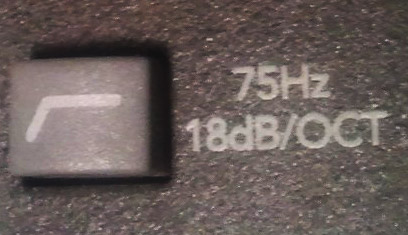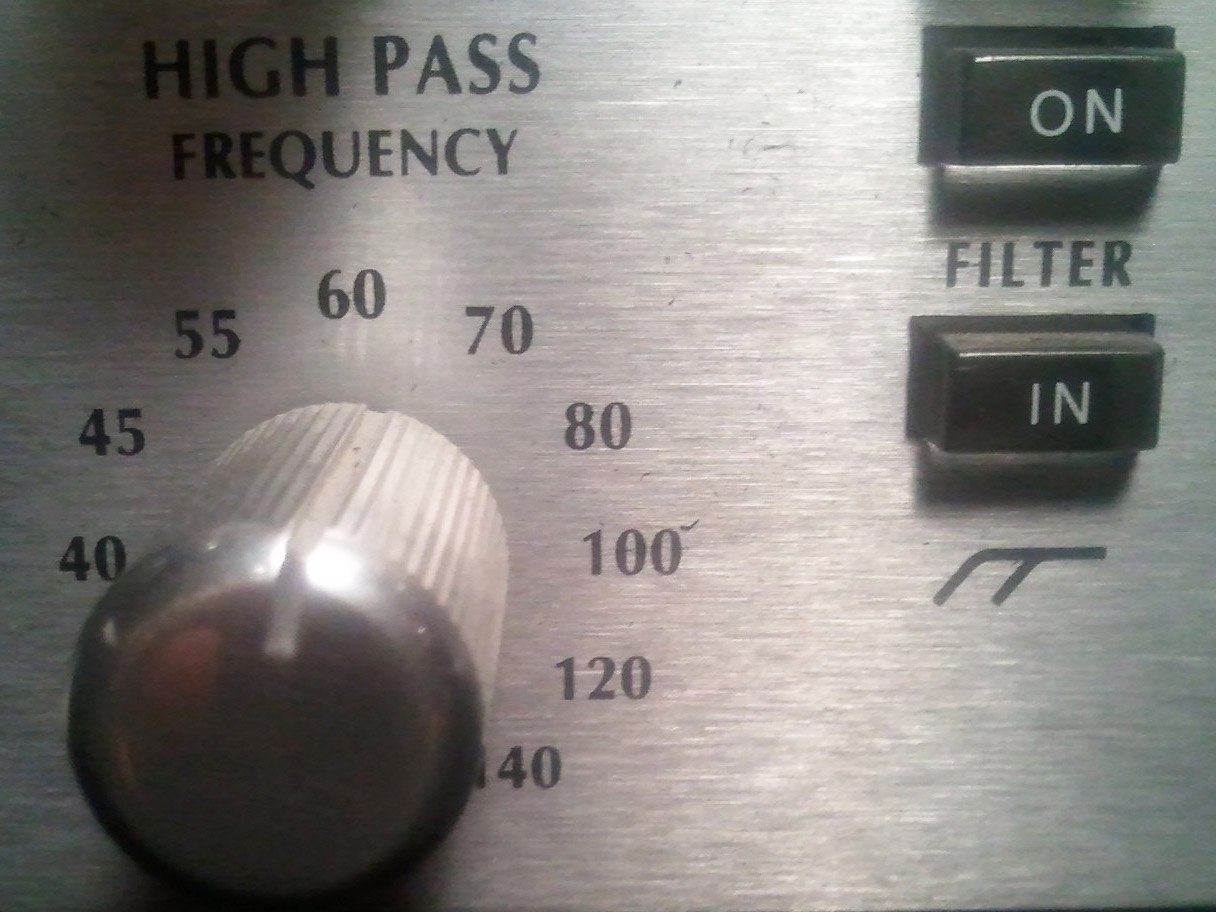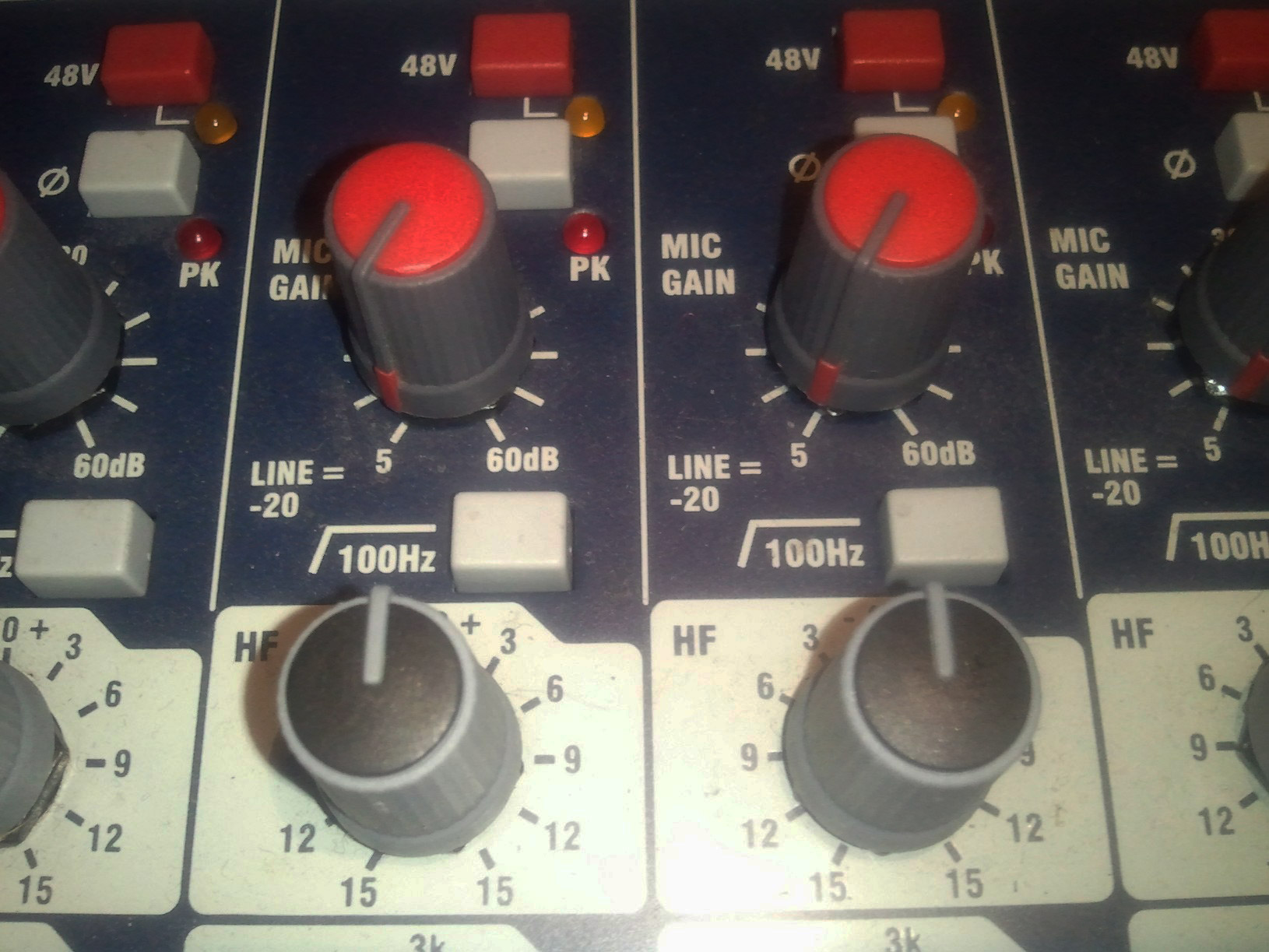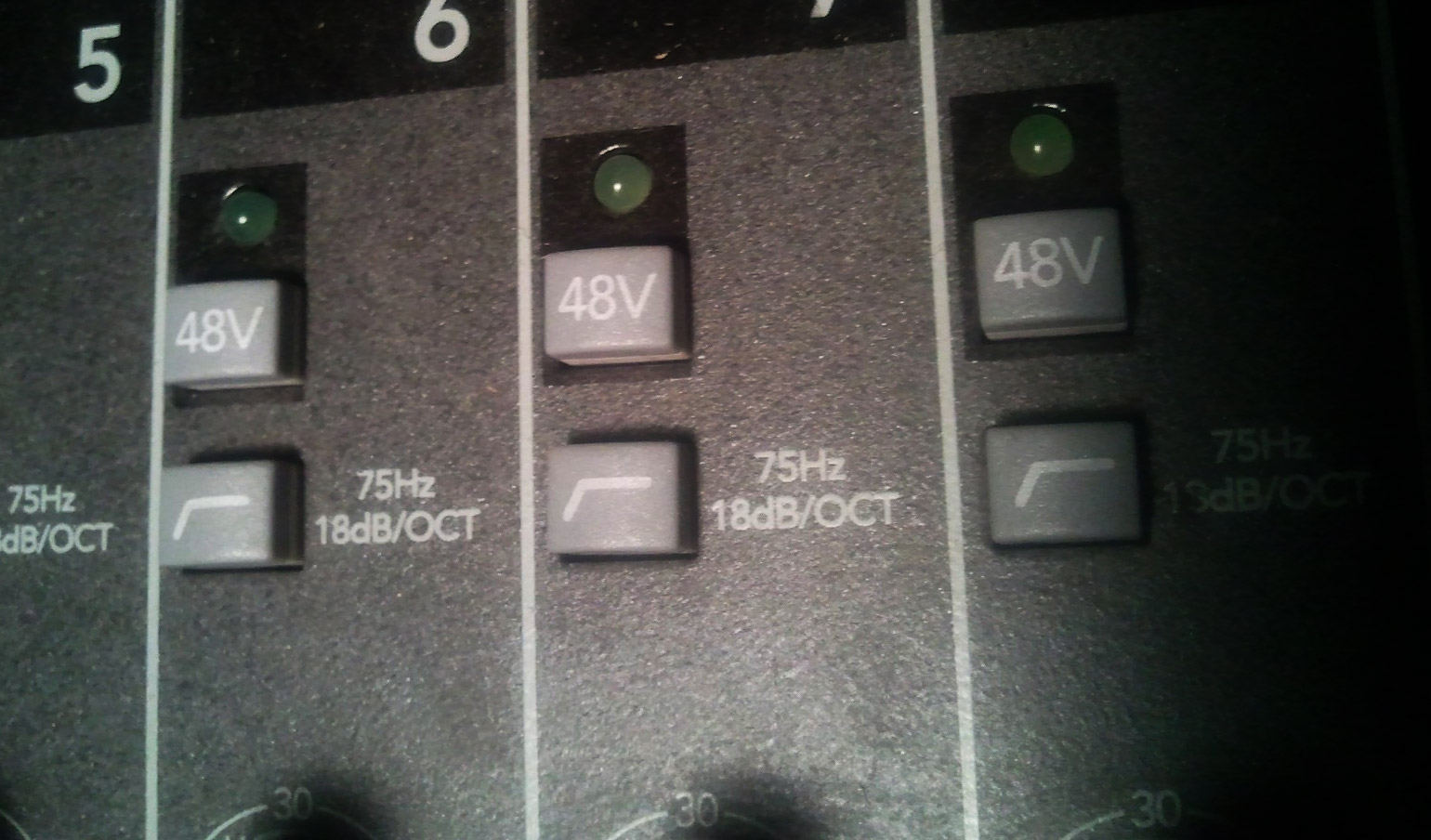When the low cut button on soundboard is pushed in, it engages a ‘Low Cut Filter‘ on that channel. (same as ‘High Pass Filter‘)
- It’s called a low cut filter because it cuts out all of the low sound below a certain frequency.
- It’s called a high pass filter because it only allows the sound above a certain frequency to pass through. Both the same thing.
On the majority of soundboards that ‘certain frequency’ is fixed, hence only having one button for it. On most boards the low cut is at 75hz, 80hz or 100 hz. On some higher end consoles and studio gear, you are given a knob to control what frequency the low cut is at. Some even let you control how gradual or steep the cut is.
Why should I use low cut?
By using low cut appropriately you can achieve a cleaner mix, get more headroom out of your PA and reduce the chance of low feedback.
Low cut is, in my opinion, probably the most under-used feature on audio equipment. It is VERY valuable to have a low cut and can make the different between a clean mix and a muddy one.
Different sound sources produce different sounds with different ranges. (frequencies)
- A Bass Amp can produce low bass all the way up to treble
- A Guitar Amp produces mainly mids.
- A Trumpet produces mids and treble.
- Voices very, but generally produce sound from low mids to treble.
If you want a more in-depth look at what frequencies are produced from different sources, I recommend the following link.
Frequency Chart
(an interactive frequency chart)
Unless the sound source for your channel is producing fundamental bass sound, you should engage your low cut. Doing so will eliminate the amplification of unwanted low sound.
This unwanted sound can be:
- Microphone handling or floor rumble (from bumping the mic or stepping on the floor that the mic stand is sitting on)
- The popping of “P’s” and “B’s” from a voice
- Unwanted electrical hum (60hz)
- Other nearby sound sources (the bass amp on stage or the pounding subs that are less than 20′ away from your mic)
When mixing live, the question shouldn’t be, “Which channels should I turn the low cut on for?“.
It should be, “Which channels should I take the low cut off for?“.
My answer at most gigs would be:
- Kick Drum
- Floor Tom
- Bass Guitar
- Some Synths (depending on the sound)
- Sample (depending on the sound – if there are bass drops, you definitely need it off)
- Some Keyboards (depending on instrumentation)
Another plus to using low cut properly is, that when you reduce the amount of unwanted bass going through your PA, you will increase your headroom. This is because it is more work for your power amps to amplify bass. So again, cutting out the unwanted bass, will allow you to get more volume out of your sound system. Not to mention it will sound less muddy.




